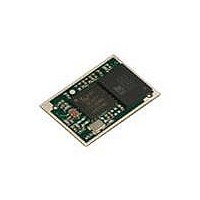DVK-BTM411 Laird Technologies, DVK-BTM411 Datasheet - Page 37

DVK-BTM411
Manufacturer Part Number
DVK-BTM411
Description
BLUETOOTH EVAL BOARD BTM411
Manufacturer
Laird Technologies
Type
Transceiverr
Specifications of DVK-BTM411
Frequency
2.4GHz
Wireless Frequency
2.402 GHz to 2.48 GHz
Interface Type
UART
Data Rate
2.1 Mbps
Operating Voltage
3 V to 3.3 V
Antenna
Multilayer Ceramic Integrated
Operating Temperature Range
- 30 C to + 70 C
Output Power
4 dBm
Technology/ Type
Development Kit
For Use With/related Products
BTM411
Lead Free Status / RoHS Status
Lead free / RoHS Compliant
Lead Free Status / RoHS Status
Lead free / RoHS Compliant, Lead free / RoHS Compliant
Other names
DVK-BTM411
Available stocks
Company
Part Number
Manufacturer
Quantity
Price
Company:
Part Number:
DVK-BTM411-02
Manufacturer:
LAIRD
Quantity:
2
BTM410/411
Bluetooth
AT COMMAND SET
REFERENCE
37 www.lairdtech.com
®
AT Data Module
Task
Automatic link key storage on dedi-
cated bonding outgoing (DBO)
Automatic link key storage on general
bonding outgoing (GBO)
Automatic link key storage on dedi-
cated bonding incoming (DBI)
Automatic link key storage on general
bonding incoming (GBI)
2. Link Key Management
3. Profile Connection Status
1.1
On a BTM device, link keys are managed by the AT firmware. Appropriate AT commands are described
on page 23. There is a range of S Registers defining the behavior of automatic link key storage on
incoming/outgoing and dedicated/general bonding.
2.1
2.2
2.3
The connection status of a profile can be queried by an ATI-Command. This might be helpful in order
to decide whether to disconnect all connected profiles (via ATH*) or a certain one. For details please
see Table 3.16.
SCO / eSCO Asynchronous Messages
The following asynchronous messages apply to SCO/eSCO connections
AUDIO ON (SCO)
This response is sent to the host when a SCO channel has been established.
AUDIO ON (eSCO)
This response is sent to the host when a eSCO channel has been established.
AUDIO OFF
This response is sent to the host when an existing SCO/eSCO channel has been closed.
AUDIO FAIL
This response is sent to the host when a SCO channel setup fails. This might be caused by the
fact that the peer only accepts eSCO connections but a SCO connection was requested or vice
versa. Please try to initiate the SCO connection with the remaining link type.
Dedicated Bonding
In BT2.1 specification, “dedicated bonding” is defined as the exchange of link keys between two
devices without the intention of establishing a connection immediately.
Dedicated bonding is initiated by “AT+BTW<BdAddr>” (initiation of pairing).
General Bonding
In BT2.1 specification, “general bonding” is defined as the exchange of link keys between two
devices with the intention of establishing a connection immediately. This is the case if a device
tries to connect to another device without existing link key. Hence, pairing (authentication and
exchange of link keys) is initiated automatically prior to the connection.
General bonding is initiated by a connection requesting AT command if there is no link key for
the peer device existing. Such AT commands are:
“AT+SPD<BdAddr>”, “AT+APD<BdAddr>”, “AT+AVD<BdAddr>”, ”AT+HSD<BdAddr>”,
“AT+HSGD<BdAddr>”, “AT+HFD<BdAddr>”, “AT+HFGD<BdAddr>”, “AT+DUD<BdAddr>”
Automatic Storage of Link Keys
Four S Registers define the automatic storage of link keys in the trusted device list, depending on
incoming/outgoing and general/dedicated bonding. Please see Table 3.15.
Table 3.15: Automatic storage of link keys
S-Register
S325 [0..1]
S326 [0..1]
S327 [0..1]
S328 [0..1]
Comment
0 = do not store (cache only)
1 = store automatically (default) identical with S538
0 = do not store (cache only)
1 = store automatically (default)
0 = do not store (cache only)
1 = store automatically (default)
0 = do not store (cache only)
1 = store automatically (default)
Laird Technologies




















